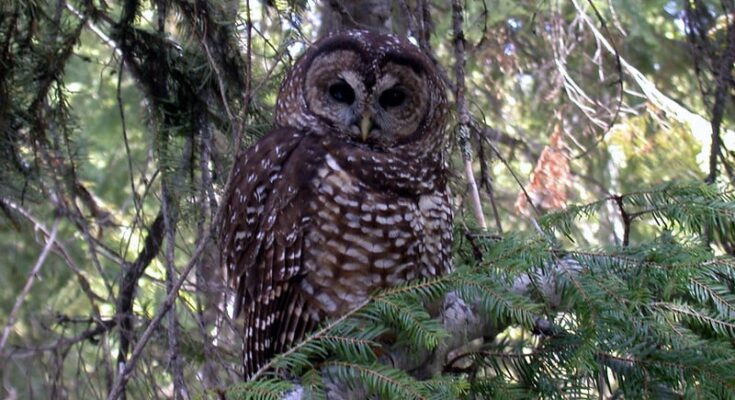U.S. wildlife officials plan to kill almost 500,000 American owls over the next thirty years. Experts believe this is necessary to protect two native owl species threatened by these invaders. However, animal rights activists say the plan is cruel and unnecessary.
Barred owls are large birds from eastern North America. In the early 1900s, these owls began moving west of the Mississippi River. This was due to changes caused by humans in the Great Plains and northern forests, says the U.S. Fish and Wildlife Service. Now, these owls are in Washington, Oregon, and California, where they are seen as invasive species.
The arrival of barred owls in the Northwest has harmed two native owl species, the northern spotted owl and the California spotted owl. These native owls are smaller than the barred owls and are losing in the fight for food and territory.
The threat of weakening genetic diversity
Barred owls have begun mating with spotted owls, creating hybrids. These hybrids could weaken the genetic diversity of the spotted owl species. The northern spotted owl population has dropped sharply in recent decades. Barred owls now outnumber them in most areas.
This species is listed as threatened under the Endangered Species Act (ESA), so the U.S. Fish and Wildlife Service (FWS) must protect it. The FWS has also suggested adding the California spotted owl to the ESA list because their numbers are also starting to decline.
Barred owl management strategy
After gathering public comments, the U.S. Fish and Wildlife Service (FWS) released its final Proposed Barred Owl Management Strategy. The documents show that the agency plans to remove about 450,000 barred owls, including hybrids, over the next 30 years. This plan might be officially approved by the end of this year.
DENVER (AP) — To save West Coast spotted owls, US officials plan to use trained shooters to kill hundreds of thousands of barred owls. pic.twitter.com/WtsVRsGqeB
— philip lewis (@Phil_Lewis_) July 3, 2024
This may seem like a large number of owls, but the cull will remove less than 1% of the predicted barred owl population in the U.S. over the proposed period.
Recovery of the spotted owl population
Officials hope this approach will help northern spotted owl populations recover and prevent barred owls from spreading further south, protecting California spotted owls. At the same time, barred owls will remain in the Northwest.
Only licensed hunters will carry out the cull, and the public will not be allowed to shoot barred owls. The FWS report also states that lead ammunition will not be used due to its harmful effects on the environment.
Criticism received by the US FWS plan to cull invasive owls
In March, when a draft of the new management strategy was released, over 75 wildlife protection and animal welfare organizations wrote an open letter criticizing the plan. They called it “colossally reckless” and said it was “doomed to fail.”
Critics argue that barred owls are being unfairly punished for expanding their range due to human actions. They also point out that hunting owls is difficult and could lead to mistakes, such as killing the wrong forest animals. These groups suggest non-lethal methods instead, although they did not provide specific alternatives.
FWS officials, however, believe the cull is the best solution for all species involved.



